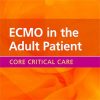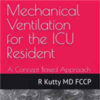Facemask vs. Helmet – Noninvasive Ventilation
aarc.orgWe use Noninvasive ventilation (NIV) to treat various disease processes, such as acute hypercapnic and hypoxemic respiratory failure, post-extubation failure, and neuromuscular diseases. Data supports NIV use in some conditions, like acute exacerbation of COPD and cardiogenic pulmonary edema, and continues to evolve in others.
While proper patient selection is vital to the success of NIV, additional aspects of NIV are crucial to successful implementation and subsequent management of the modality. Ventilator, interface, and mode/setting selections are all critical components to the proper delivery of NIV.
Several NIV interfaces are available, including nasal masks, oronasal masks, mouthpieces, total face masks, and helmets.
When selecting the best interface, the clinician must consider various factors, such as patient tolerance factors, facial skin breakdown, medication delivery, and device availability.
The primary clinical goal in NIV use is to minimize the need for intubation, invasive mechanical ventilation, and the associated adverse effects.

















